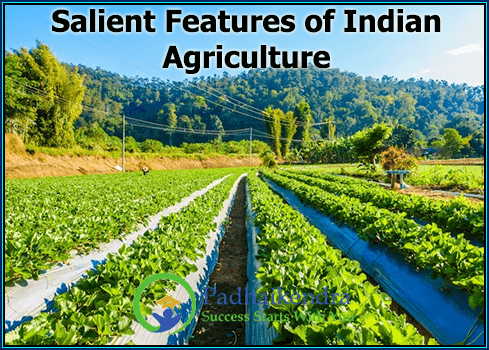Here are some salient features of Indian agriculture:
- Dominance of small and marginal farmers: The majority of Indian farmers own small or marginal land holdings, which makes Indian agriculture highly fragmented. As per the latest agricultural census, small and marginal farmers together own more than 85% of the total operational holdings in the country.
- Dependence on monsoon: Indian agriculture is heavily dependent on monsoon rains, which are highly variable and unpredictable. A significant portion of Indian farmland still lacks irrigation facilities, which makes agriculture vulnerable to weather shocks such as droughts and floods.
- Diversity in cropping patterns: India has a diverse range of agro-climatic zones, which supports a variety of crops. There is significant regional variation in cropping patterns, with some regions specializing in certain crops such as rice or wheat, while others grow horticultural crops or cash crops like cotton and sugarcane.
- Labor-intensive farming: Indian agriculture is highly labor-intensive, with the majority of agricultural activities being performed manually. This is due to the high cost of agricultural machinery and a lack of infrastructure to support mechanization.
- Traditional farming practices: Indian agriculture is characterized by traditional farming practices, which are often subsistence-oriented and lack modern technologies. Many farmers still use traditional methods of cultivation and depend on traditional seed varieties.
- Multiple cropping systems: Due to the favorable agro-climatic conditions, multiple cropping is prevalent in many parts of India. Farmers often grow two or more crops in a year in the same field, which increases the overall productivity of the land.
- Importance of livestock: Livestock farming plays a significant role in Indian agriculture, providing additional income to farmers and supporting soil fertility. Dairy farming is particularly important, with India being the world’s largest producer and consumer of milk.
Overall, Indian agriculture is characterized by a complex set of factors that make it both diverse and challenging. While there have been efforts to modernize the sector and promote sustainable farming practices, there is still much work to be done to improve the livelihoods of Indian farmers and ensure food security for the country’s growing population.





